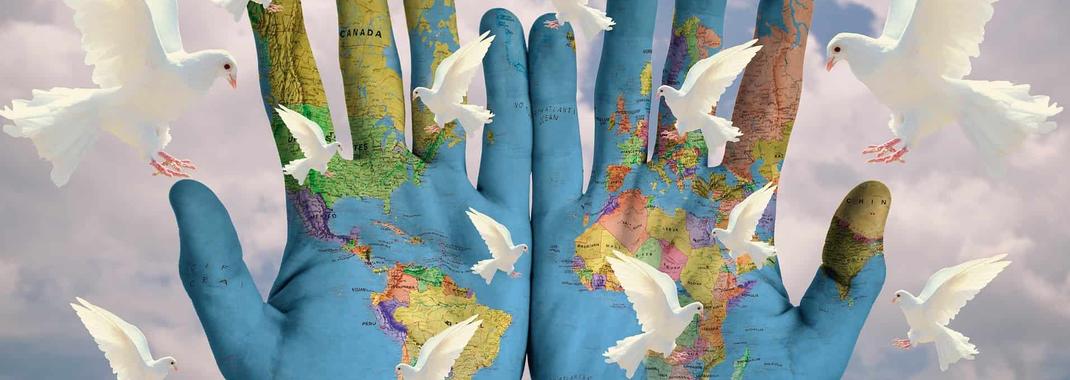Geometry for stability
The conventional model on how you create Peace is based on three core elements: peacebuilding, peacekeeping and peacelearning. It is a very good and stable construction and a certain analogy can be made with the tripod table.
By definition: Three legs is the minimum required to be stable in three dimensions (in technical language, each leg constrains one degree of freedom).
If you want something stable on uneven ground (like a conflict zone) then you use three legs and splay them so their base is larger than whatever is on top. Thus, it is clear that a greater area of the base would contribute to greater stability. That is why the Peacemaking requires a massive involvement by the international community and so much resources to build a peace and efforts to sustain it in relatively small conflict zones.
The 'New Reality' calls for new modalities.
At DISI we acknowledge that the three points are ALWAYS on the same plane. That means a tripod will never wobble like a four-legged table. Not even if the legs are of uneven length. Not even if the terrain is uneven. A three-legged Peace Table won't wobble either but may become unstable with large loads specially in a top-heavy configuration. Some heavy political and/or societal overload on the surface or tension on the borders and the Peace might be easily broken. We all embrace the Peace is a very fragile object...
The Political, Societal and Foreign landscape is always uneven.
Yes, we do realise that embedding a forth leg to the Peace Table may induce some instability but we take that risk and responsibility by defining a forth element (with two independent instruments) in the model of our GLOBAL PEACE INITIATIVE - the peaceengineering. Because:
- There is a theorem in topology that, whatever the shape of the ground, subject to certain continuity assumptions, you can always make a four legged table stable simply by rotating it. (The surface of the table won't generally be levelled, though.) We call it 'REVOLVING COMPONENT'.
- If precise leveling is required - our Peace Table is built with adjustable legs. We call it 'TUNING COMPONENT'.
Four legs makes sense though, it gives a general point of contact no matter which way you lean or twist, and doesn't require the legs to necessarily be splayed out as far to prevent tipping. Thus, it is possible to achieve better

